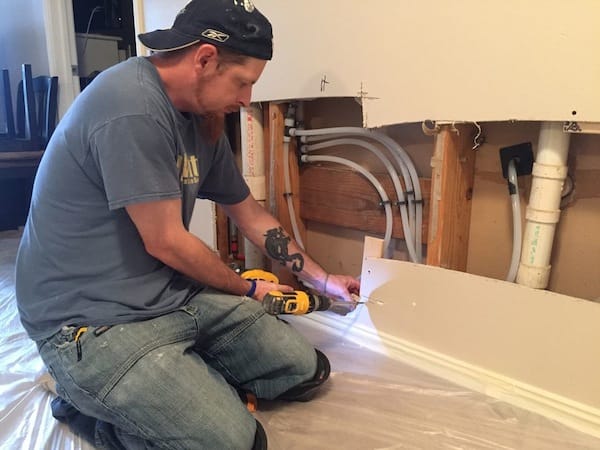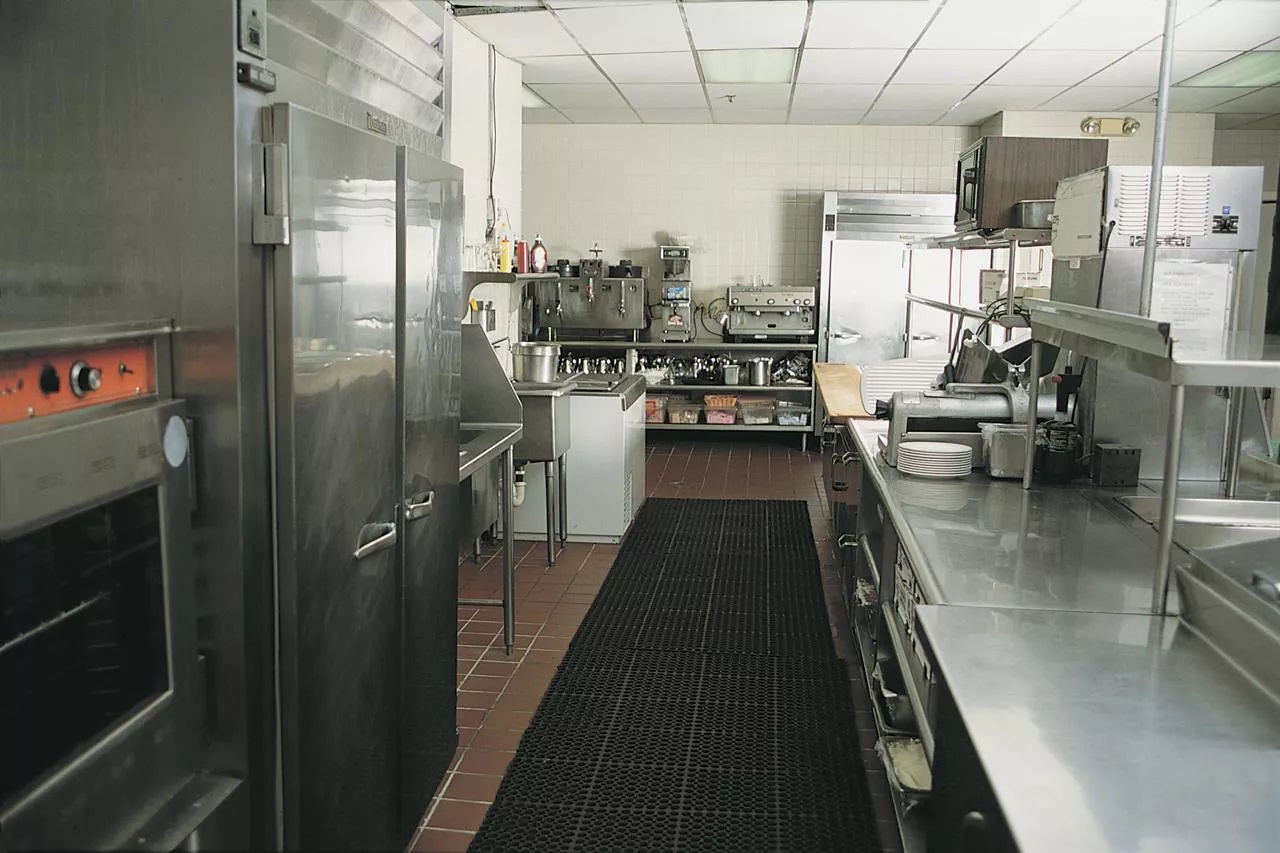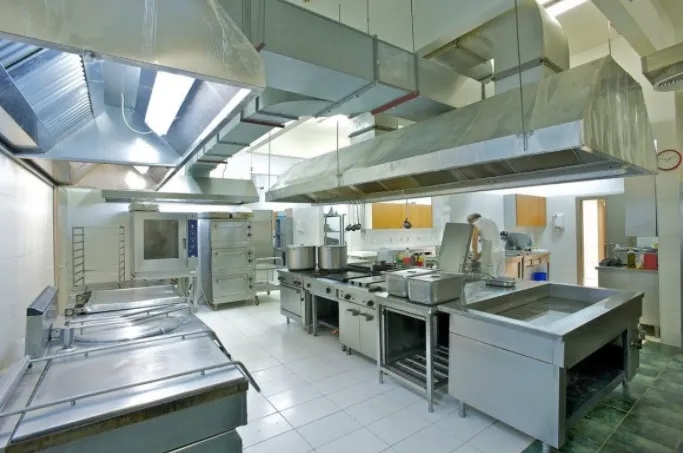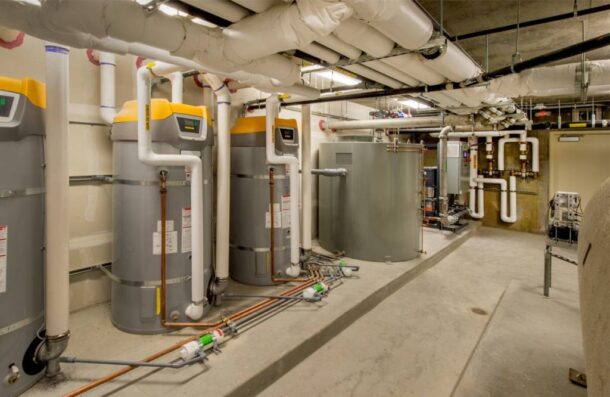Embarking on home projects is an exciting yet daunting task, often presenting homeowners with the pivotal decision: should you hire a contractor or take on the project yourself? This comprehensive article aims to guide you through this decision-making process, exploring the advantages and challenges of both approaches and offering real-world insights to inform your choice Read more
Whats New

Embarking on home projects is an exciting yet daunting task, often presenting homeowners with the pivotal decision: should you hire a contractor or take on the project yourself? This comprehensive article aims to guide you through this decision-making process, exploring the advantages and challenges of both approaches and offering real-world insights to inform your choice. With a focus on understanding, planning, and executing your home projects, whether a minor repair or a major renovation, you’ll be equipped with the knowledge to make a decision that aligns with your budget, skills, and goals.
Navigating the Choice Between Contractor and DIY
Choosing between a contractor and DIY isn’t just a matter of preference; it’s about understanding your project’s scope, scale, and nature. Contractors bring expertise, efficiency, and peace of mind, especially for complex tasks. They are well-versed in handling unforeseen complications and ensuring the work adheres to building codes and regulations. Conversely, DIY projects can significantly cut costs and offer a highly personalized touch to your home improvements. Before making a final choice, you should know what each choice entails and how to assess which is the right fit for your specific project needs.
Additionally, it’s essential to consider the long-term impact of your choice on the value of your home and your lifestyle. Balancing the immediate satisfaction of a DIY project with the enduring quality of professional work can guide your decision. Ultimately, whether you hire a contractor or take the DIY plunge, your focus should be on achieving a result that reflects your vision and ensures the safety and longevity of your home.

Professional Touch: The Role of Contractors in Home Projects
From their ability to manage and coordinate various aspects of a project to their specialized skills and knowledge, contractors can be the key to a successful, hassle-free renovation. Understanding the benefits of hiring a professional and the potential drawbacks will provide a balanced view and help you gauge the worth of investing in expert services for your home project.
For instance, consider the scenario of planning an outdoor improvement project like deck building. In such cases, hiring professional deck builders means you’re leveraging specialized expertise in outdoor construction. This ensures that your deck will not only be aesthetically pleasing but also structurally sound and compliant with local building codes, providing a seamless blend of beauty, durability, and legal adherence.
Professionals also bring insights into the best materials for longevity and maintenance, making your deck a lasting addition to your home. Furthermore, experienced deck builders can often complete the project more quickly and precisely, which might be challenging to replicate on a DIY basis. It’s also vital to recognize the security and accountability that comes with hiring a licensed and insured professional, which protects your investment and ensures that the project meets industry standards.
Moreover, contractors often have access to a broader range of materials, tools, and a network of subcontractors, which can significantly enhance the quality and efficiency of the final product. This comprehensive understanding of the contractor’s role will enable you to make an informed decision, ensuring that your home renovation is a wise investment in your property’s future.
The Empowerment of DIY: Taking Home Projects into Your Own Hands
The DIY route is more than just a budget-friendly option; it’s a journey into learning and creativity. This segment explores the empowering aspects of taking on a project yourself, from acquiring new skills to satisfying personal accomplishment. It also realistically addresses the challenges and limitations of DIY, offering advice on assessing your capabilities and when it might be wise to call in a professional. Highlighting the need to get your ducks in a row, we stress the importance of really getting to know your project inside out, which means doing your homework and making sure you’ve got all the right tools and materials lined up.
Additionally, the DIY path often fosters a deeper connection with your home as you invest in its improvement and customization. But it’s also about knowing your limits and recognizing when a task exceeds your skill level or poses risks, ensuring that your DIY endeavors are rewarding, safe, and successful. This approach encourages a proactive attitude towards learning and problem-solving, often leading to innovative solutions and a more intimate understanding of your home’s workings. Furthermore, DIY projects can be a flexible, iterative process, allowing you to adjust plans and respond to challenges creatively, turning obstacles into opportunities for improvement and personal growth.
Weighing the Factors: Budget, Time, Quality, and Stress
Decision-making is often a balance of various factors, including budget, time, quality, and personal stress. So, let’s unpack a few key things, giving you a full picture of what sways the decision between rolling up your sleeves for a DIY or bringing in a contractor. By understanding the trade-offs and implications of each factor, you’ll be better equipped to make a decision that aligns with your priorities and ensures a successful outcome for your project.
Preparation is crucial, whether you hire a contractor or embark on a DIY journey. This part guides equipping yourself with the right tools, materials, and knowledge. For DIY enthusiasts, it offers tips on where to find resources and how to learn the necessary skills. For those opting for a contractor, it advises selecting the right professional and ensuring a smooth collaboration. Preparing effectively can distinguish between a frustrating endeavor and a rewarding project experience.
Embracing Flexibility: Mixing Contractor Expertise with DIY Spirit
In the realm of home improvement, homeowners often overlook a middle ground: combining contractors’ expertise with the personal touch of DIY. The hybrid approach means that you can leverage professional skills for the more complex aspects of a project while taking on manageable tasks yourself.
It discusses how to effectively blend the two methods to customize your home improvements, optimize budgets, and achieve a balance between professional quality and personal involvement. By understanding how to integrate the strengths of both contractors and DIY, you can tailor the renovation process to fit your unique needs, leading to a more satisfying and efficient home project experience.
Conclusion
Wrapping up our discussion, we underscore the importance of informed decision-making. Whether you hire a contractor or take on a DIY project, the goal is to enhance your home in a way that brings satisfaction, comfort, and value. By considering the insights and advice provided throughout this article, you’ll be well-prepared to make a choice that suits your needs, abilities, and vision for your home. With the right approach, your home project can be a fulfilling adventure that transforms your living space and enriches your life. Remember, each decision reflects your personal touch and care for your home, turning it into a space that truly feels like yours.

Your home’s roof is a critical shield against the elements, embodying the safety and integrity of the entire structure. A resilient roof protects against weather extremes but over time, it may also face challenges like moss growth, which can compromise its durability and aesthetics. Ensure the longevity of your roof by considering a professional moss removal Read more
Your home’s roof is a critical shield against the elements, embodying the safety and integrity of the entire structure. A resilient roof protects against weather extremes but over time, it may also face challenges like moss growth, which can compromise its durability and aesthetics. Ensure the longevity of your roof by considering a professional moss removal service to maintain its strength and appearance, and contribute significantly to your home’s overall energy efficiency and longevity. Maintaining and enhancing your roof’s resilience is critical to safeguarding your home and maximizing your investment.
Choosing suitable materials, ensuring professional installation, and committing to regular maintenance are the pillars of a long-lasting roof. This guide aims to provide you with actionable insights and knowledge, empowering you to make informed decisions that extend the life of your roof and improve your home’s performance.

Initial Considerations: Understanding Roof Lifespan and Material Choices
The lifespan of your roof is greatly influenced by the materials you choose. From traditional asphalt shingles to durable metal or elegant slate, each option has a specific lifespan, aesthetic appeal, and maintenance requirements. Understanding the pros and cons of each material, alongside factors like your local climate and the roof’s exposure to the elements, is crucial in making a choice that balances cost, appearance, and longevity.
However, material choice is just the beginning. The actual lifespan of your roof also hinges on other critical factors, such as the quality of installation, the regularity of maintenance, and even the architectural design of your roof. By considering all these aspects, homeowners can set realistic expectations and plan effectively for the future of their roofing system.
Professional Installation: Laying the Foundation for Roof Longevity
The installation of your roof is crucial for its future resilience. Professional, high-quality installation prevents numerous issues, particularly with metal roofing, known for its durability, energy efficiency, and low maintenance. Expert installation from a reputable metal roofing company ensures the material is optimized for your climate, extending the roof’s life and performance. Choosing a qualified, experienced roofing contractor is vital in this process.
When selecting a contractor, ask for references, proof of insurance, and detailed quotes. A professional should offer a warranty, showcasing their confidence. Specifically, contractors with a track record in this area can maximize the benefits of longevity, weather resistance, and energy efficiency for metal roofing. A properly installed metal roof is more than a cost; it’s a long-term investment in your home’s safety and efficiency, ensuring durability and peace of mind.
Routine Inspections: The Key to Early Detection
Regular inspections are the cornerstone of roof maintenance. By identifying and addressing issues early, homeowners can prevent minor problems from escalating into major, costly repairs. Ideally, inspections should occur twice a year and after any severe weather events. Look for signs of wear, such as cracked or missing shingles, damaged flashing, or excessive granule loss.
But inspections aren’t just about spotting damage. They also offer an opportunity to clear debris, clean gutters, and ensure that vents and chimneys are sealed and functioning correctly. Consistent attention to these details can significantly extend the life of your roof and maintain its optimal performance.
Comprehensive Maintenance: Protecting Your Investment
Beyond inspections, comprehensive roof maintenance involves a series of regular tasks tailored to the roof’s material and the home’s surrounding environment. This includes cleaning gutters to prevent water backup, removing overhanging branches that can scratch or gouge roofing materials, and ensuring proper attic ventilation to prevent moisture buildup and heat accumulation.
Maintenance also means being proactive about repairs. Addressing minor issues can prevent more significant, more expensive problems. Whether replacing a few damaged shingles or resealing a leaky vent, timely interventions can significantly extend the lifespan and effectiveness of your roof.
Navigating Environmental Challenges: Adapting to Climate and Nature
Environmental factors play a significant role in the health and longevity of your roof. Sun exposure, wind, rain, snow, and nearby foliage can all impact your roofing material differently. For instance, areas with heavy snowfall require roofs capable of bearing significant weight, while homes in hurricane-prone regions need roofing systems to withstand high winds.
Choosing materials and maintenance strategies suited to your specific climate is essential to protect your roof from these elements. This might mean selecting reflective materials for hot, sunny climates or ensuring proper insulation and snow removal in colder regions. Understanding and adapting to these environmental challenges is key to maintaining a resilient roof.
Repair or Replace: Making Informed Decisions
Knowing whether to repair or replace your roof is crucial to maintaining its resilience. Frequent, minor repairs can extend the life of a roof, but there comes a point when the cost and effort of ongoing maintenance outweigh the benefits. Signs that your roof may need replacing include widespread damage, persistent leaks, or the roofing material’s age nearing its expected lifespan.
This decision requires carefully evaluating the roof’s current condition, the potential longevity of repairs versus replacement, and the costs involved. Consulting with a professional roofing contractor can provide valuable insights and help you make an informed, cost-effective decision about the future of your roof.
Embracing Innovations: Future-Proofing Your Roof
As the roofing industry evolves, so do the materials and techniques available to homeowners. Innovations like cool roofing, green roofs, and advanced shingle technology offer enhanced durability, energy efficiency, and environmental benefits. These new options can make your roof more resistant to extreme weather and more energy-efficient or even turn it into a living ecosystem.
Staying informed about these advancements and considering them in roofing can provide long-term benefits. Whether you’re repairing, replacing, or simply looking to improve your roof’s performance, exploring these innovative options can help you future-proof your home against whatever challenges lie ahead.
Conclusion
Investing in your roof’s resilience is a proactive step towards safeguarding your home, reducing future expenses, and enhancing your living environment. By understanding the factors contributing to a roof’s longevity, committing to regular maintenance, and staying informed about the latest innovations, homeowners can ensure their roofs remain robust and effective for years.

The realm of restaurant refrigeration maintenance might not be the most glamorous aspect of the culinary world, but it certainly is one of the most crucial. This invisible hero in a restaurant’s kitchen plays a pivotal role in ensuring the freshness and safety of the food served. Just like a symphony conductor, refrigeration units need Read more
The realm of restaurant refrigeration maintenance might not be the most glamorous aspect of the culinary world, but it certainly is one of the most crucial. This invisible hero in a restaurant’s kitchen plays a pivotal role in ensuring the freshness and safety of the food served. Just like a symphony conductor, refrigeration units need to perform impeccably to create a harmonious experience for both the chefs and the diners.
In essence, restaurant refrigeration maintenance encompasses the regular check-ups and repairs of refrigeration systems used in food establishments. These systems range from small coolers to large commercial walk-in freezers and refrigerators. The maintenance process involves several activities like cleaning, inspecting, and repairing parts to ensure optimal functioning.
Why is Regular Refrigeration Maintenance Crucial for Restaurants?
In the bustling environment of a restaurant, the refrigeration system is akin to the heart, circulating life through every dish. Regular maintenance is not just a preventive measure but a core strategy for preserving food quality and safety. Without it, restaurants risk everything from minor inconveniences to major health hazards.

The Nuances of Refrigeration Woes
Inconsistent Cooling Temperatures
Fluctuating temperatures in a refrigeration unit can be a silent assassin, subtly compromising food safety. Understanding the causes, from faulty thermostats to overstocking, is essential in preventing temperature-related issues.
Refrigeration Unit Making Strange Noises
Those odd sounds coming from your fridge are more than just a nuisance; they could be distress signals. Recognizing whether it’s a loose component or a failing motor can save both the unit and the food inside.
Ice Build-Up in the Refrigerator
Ice accumulation might seem harmless but is often a symptom of deeper issues like seal leaks or incorrect temperature settings.
Leakage and Water Pooling Around the Unit
Water leaks can lead to slip hazards and indicate problems ranging from clogged drain lines to refrigerant issues.
Preventative Maintenance Strategies for Restaurant Refrigerators
Proactive maintenance is the key to avoiding unforeseen breakdowns and costly repairs. It involves a series of actions, each serving a specific purpose in the overall health of the refrigeration system.
Regular Cleaning and Inspection: A detailed guide on how to methodically clean and scrutinize every part of the refrigeration unit, ensuring nothing is amiss.
Checking and Replacing Door Seals: Door seals might be small components, but their integrity is critical in maintaining the right internal environment.
Monitoring Refrigeration Temperatures: A continuous process of keeping an eye on temperature readings, adjusting them to suit varying storage needs.
Troubleshooting Common Refrigeration Problems
When things go awry, knowing how to identify and address common issues can be a game-changer. This section provides a pragmatic approach to solving frequent refrigeration troubles.
How to Address Refrigeration Unit Overheating?
Detailed instructions on pinpointing and rectifying overheating problems, ensuring the longevity of the unit.
What to Do If the Refrigerator Stops Cooling?
Step-by-step troubleshooting for cooling issues, a critical aspect of food safety.
Solutions for Excessive Noise in Refrigeration Units: Practical tips to diagnose and mitigate noise problems, contributing to a more efficient and quieter kitchen.

Professional Maintenance and Repair Services
There comes a time when professional intervention is needed. This section discusses the scenarios that require expert hands and what to expect from these services.
Choosing the Right Refrigeration Service Provider: A bullet list outlining key criteria in selecting a skilled and reliable maintenance service.
Cost Considerations for Professional Maintenance: An overview of the financial aspects involved in professional services, helping restaurant owners make informed decisions.
Upgrading and Replacing Old Refrigeration Units
Sometimes, the best course of action is to upgrade or replace an old unit. This segment delves into recognizing the signs that call for an upgrade and choosing the right new system.
Advantages of Modern Refrigeration Technology
Discussing the benefits such as energy efficiency, enhanced cooling capabilities, and smart features that modern units offer.
How to Choose the Right Refrigeration System for Your Restaurant
A comprehensive guide on selecting the best refrigeration system, tailored to the specific needs of a restaurant.
Legal and Safety Standards in Restaurant Refrigeration
Navigating the labyrinth of regulations and standards is crucial for any food establishment. This part provides a detailed look into the legalities and safety norms surrounding restaurant refrigeration.
Understanding Food Safety Regulations
A thorough explanation of the laws and guidelines governing refrigeration and food storage.
Compliance and Regular Audits
The significance of adhering to standards and being prepared for periodic inspections and audits.
DIY Maintenance Tips for Restaurant Owners
Empowering restaurant owners with the know-how to perform basic maintenance tasks can be a game-changer. This section offers easy-to-follow advice for regular upkeep.
Basic Cleaning and Upkeep
A step-by-step guide on maintaining cleanliness and operational efficiency of refrigeration units.
Monitoring and Recording Temperatures
Tips and techniques for keeping accurate temperature logs, a critical component of food safety compliance.
The Impact of Refrigeration Maintenance on Food Quality
This segment explores how diligent maintenance not only prolongs the life of refrigeration units but also directly impacts the quality and safety of the food stored within.
Conclusion
Wrapping up, this comprehensive guide underscores the pivotal role of refrigeration maintenance in the culinary world. It’s not just about fixing machines; it’s about safeguarding the heart of the kitchen, ensuring every meal served is a testament to quality and safety.

Starting a general contractor business can be an exciting and rewarding venture. As a general contractor, you have the opportunity to work on a variety of projects and be your own boss. However, starting a business requires careful planning and preparation. In this article, we will guide you through the essential steps to start a Read more
Starting a general contractor business can be an exciting and rewarding venture. As a general contractor, you have the opportunity to work on a variety of projects and be your own boss. However, starting a business requires careful planning and preparation. In this article, we will guide you through the essential steps to start a successful general contractor business in 2024.

Research and Planning
Before venturing into the realm of general contracting, you’ll want to engage in extensive research and develop a comprehensive business plan. This meticulously crafted plan should encompass a detailed elucidation of your objectives, intended customer base, in-depth analysis of competitors, and well-grounded financial projections. It will serve as a guiding compass for your business endeavors, empowering you to make astute and well-informed choices as you traverse this exciting entrepreneurial journey.
Legal Requirements and Licensing
To successfully and legally operate a general contractor business, you’ll need to fulfill a number of essential legal requirements and acquire the appropriate licenses and permits. Conduct thorough research on the specific regulations and guidelines applicable to your particular area of operation, and ensure that you meticulously adhere to all the necessary paperwork and procedures. This may include:
- registering your business with the relevant authorities
- procuring comprehensive liability insurance to safeguard your interests
- obtaining any mandatory bonds that may be required
By diligently following these steps, you can establish a solid foundation for your general contractor business and ensure that you are operating within the legal framework while also mitigating potential risks and liabilities.
Insurance Coverage
Insurance is a vital aspect of running a general contractor business. It provides protection against various risks and liabilities that may arise during construction projects. Here are some essential insurance coverages to consider:
- General liability insurance protects your business from third-party claims for bodily injury, property damage, or personal injury. It provides coverage for legal fees, medical expenses, and potential settlements or judgments.
- Workers’ compensation insurance – If you have employees, workers’ compensation insurance is typically required by law. This coverage provides benefits to employees who suffer work-related injuries or illnesses. It helps cover medical expenses, lost wages, and rehabilitation costs.
- Builder’s risk insurance offers protection for property and materials during construction projects. It covers damage caused by theft, vandalism, fire, storms, and other specified perils. Having this coverage ensures that you are financially protected if unexpected events occur.
- Professional liability insurance coverage, also known as errors and omissions insurance, is essential for contractors who provide design or consulting services. Essentially, by having professional liability insurance coverage, these types of businesses can protect themselves from claims of negligence, errors, or omissions that may lead to financial losses for clients.
Financing Your Business
Starting a general contractor business is an exciting venture that involves several important steps. One of the key aspects to consider is the initial investment required for equipment, supplies, marketing, and other startup costs. You need to carefully evaluate your financing options to ensure that you have the necessary funds to get your business off the ground.
One option is to use your personal savings to cover the initial investment. This allows you to maintain control over your business and avoid taking on additional debt. However, it’s important to assess whether your savings are sufficient to cover all the expenses associated with starting a general contractor business.
Another financing option to explore is obtaining a business loan. This can provide you with the necessary funds to purchase equipment, hire employees, and cover other essential expenses. However, it’s important to research different lenders and compare interest rates and repayment terms to find the best loan option for your specific needs.
Building a Network
Networking plays an indispensable role in the success and growth of any business, including general contractor businesses. It is of utmost importance to actively and proactively connect, engage, and collaborate with other highly skilled and experienced industry professionals, reputable subcontractors, reliable suppliers, and potential clients. All these groups can greatly contribute to the remarkable achievements and profitability of your business.
By actively participating in various industry events, conferences, seminars, and workshops, you can not only enhance your knowledge and expertise but also create invaluable connections and establish long-lasting, mutually beneficial relationships with key stakeholders and decision-makers in the industry.
Additionally, joining and actively participating in reputable trade associations and organizations can provide you with a wide range of exclusive benefits, including access to valuable resources, industry insights, and networking opportunities with like-minded professionals.

Marketing and Branding
To effectively promote your general contractor business, you need to develop a comprehensive marketing strategy that encompasses various elements. Here are some additional ideas to consider:
- Establish a strong online presence.
In addition to creating a professional website, consider setting up profiles on social media platforms such as Facebook, Instagram, and LinkedIn. This will allow you to engage with potential customers, showcase your previous projects, and share valuable content related to your expertise.
- Utilize search engine optimization (SEO).
Optimize your website and online content with relevant keywords to improve your visibility on search engine results pages. This will increase the chances of potential customers finding your business when searching for contractor services.
- Invest in online advertising.
Consider running targeted online ads on platforms like Google Ads or social media platforms. This will help you reach a wider audience and generate leads for your business.
- Build strong relationships with satisfied clients.
In addition to providing testimonials on your website, actively seek feedback from satisfied clients and encourage them to leave reviews on platforms like Google My Business, Yelp, or Angie’s List. Positive reviews and recommendations can greatly influence potential customers’ decision-making process.
- Offer valuable content.
Create blog posts, videos, or case studies that demonstrate your expertise and provide valuable information to your target audience. This will not only help establish you as an authority in your industry but also attract potential customers who are seeking relevant information.
Remember, a comprehensive marketing strategy goes beyond just having a website. By implementing these additional ideas, you can effectively promote your general contractor business and stand out from your competitors.
Final Thoughts
Starting a general contractor business in 2024 requires careful planning, knowledge of legal requirements, and a strong focus on insurance coverage. By conducting thorough research, obtaining the necessary licenses, and protecting your business with the right insurance policies, you can lay a solid foundation for success. Remember to build a strong network, implement effective marketing strategies, and never stop learning and improving your skills. With dedication and determination, you can build a thriving general contractor business in 2024.

In today’s ever-evolving commercial real estate market, staying relevant and attractive to businesses and consumers is imperative. This necessity is not just a trend but a critical component of sustaining business success. Our journey into commercial property revitalization explores the transformative strategies essential for thriving in the modern market. This guide aims to navigate the Read more
In today’s ever-evolving commercial real estate market, staying relevant and attractive to businesses and consumers is imperative. This necessity is not just a trend but a critical component of sustaining business success. Our journey into commercial property revitalization explores the transformative strategies essential for thriving in the modern market.
This guide aims to navigate the myriad of innovative upgrades that can breathe new life into commercial spaces. We’ll uncover how these upgrades enhance the aesthetic appeal and boost functionality, efficiency, and sustainability, aligning with contemporary business needs and customer expectations.

The Evolution of Consumer and Business Needs
The era when commercial properties could remain static for decades is now a relic of the past. In today’s digital age, coupled with the ever-evolving preferences of consumers, there’s a pressing demand for continuous adaptation and reinvention. This dynamic landscape requires property owners to stay agile and responsive to shifting trends and technological advancements. Properties that must adapt to these changes risk becoming irrelevant, reducing foot traffic and business opportunities.
Planning for Revitalization: A Step-by-Step Guide
The first step towards revitalization is a thorough assessment of your commercial property. Identifying areas that need improvement sets the stage for a successful upgrade project. This phase balances ambition and practicality, ensuring the goals align with the available budget and stakeholder expectations.
Once the assessment is complete, it’s time to plan. This involves setting realistic goals, budgeting effectively, and engaging with key stakeholders – business owners, property managers, and tenants. Aligning everyone’s vision is crucial for a smooth revitalization process, ensuring that the upgrades meet the needs of all parties involved.
Paving and Exterior Upgrades
First impressions are crucial, and the exterior of a commercial property plays a significant role in shaping these perceptions. Quality paving, crafted by skilled commercial paving companies, and well-designed outdoor spaces are pivotal in enhancing a property’s curb appeal. The expertise of these companies in selecting suitable materials and designs for paving must be considered, as their choices greatly influence the property’s overall aesthetic, functionality, and durability.
Beyond the expertise brought in by commercial paving companies, other exterior elements like landscaping and signage also contribute significantly to a property’s allure. This section will delve into harmonizing these elements to create an inviting and professional exterior. Such an exterior attracts attention and reflects the quality and ethos of the businesses it houses, making it an integral part of the property’s identity and appeal.

Technology Integration
Incorporating technology into commercial spaces is no longer a luxury but a necessity. Technology can significantly enhance operational efficiency and customer engagement, from automated lighting systems to sophisticated security solutions. This section will explore specific technological advancements reshaping commercial properties’ operations, offering both owners and tenants tangible benefits.
But technology isn’t just about gadgets and systems; it’s about creating an environment that resonates with the modern consumer and workforce. For example, smart buildings save energy and provide everyone with a more comfortable and interactive experience. We’ll dive into how these technologies can seamlessly integrate into existing spaces, catapulting them into the digital age.
Aesthetic and Functional Improvements
The visual appeal of a property plays a crucial role in attracting and retaining customers. This section discusses the transformative power of aesthetic upgrades, from modern lighting fixtures to contemporary design elements. These changes, while often simple, can significantly impact the overall appeal of a commercial space.
Functionality is equally important. Upgrades should not only look good but also enhance the practical use of the space. We’ll explore how layout alterations, signage improvements, and other functional enhancements can make a property more user-friendly and appealing to many businesses.
Sustainability Initiatives
Sustainability is a crucial consideration in modern property upgrades. Eco-friendly enhancements contribute to environmental conservation and offer long-term financial benefits. This section will discuss various sustainable upgrade options like energy-efficient systems and green building materials, highlighting their importance in today’s market.
In addition to environmental benefits, sustainable upgrades can lead to cost savings and improved public perception. We’ll explore how incorporating green practices into property revitalization can enhance a business’s brand and appeal to a growing demographic of environmentally conscious consumers and clients.
Overcoming Revitalization Challenges
While the benefits of property revitalization are clear, the process is often fraught with challenges. One of the most common hurdles is funding. Securing the necessary capital for a large-scale upgrade can be daunting. Property owners often face regulatory compliance issues, ensuring all renovations meet current codes and standards. This section provides strategies for overcoming these financial and regulatory obstacles, offering practical advice on navigating these complexities.
Another significant challenge is minimizing disruption to existing tenants and businesses during the upgrade process. It’s crucial to manage renovations in a way that allows companies to operate as usual. We’ll discuss how to plan and communicate with tenants effectively, ensuring a smooth transition through the renovation period.
tenants and visitors, adding a new dimension to the traditional concept of commercial property.
Implementing Upgrades: A Practical Roadmap
Having a well-thought-out plan is crucial for the successful implementation of property upgrades. This part of the article provides a step-by-step guide on bringing your revitalization project to fruition. From selecting the right contractors to managing the project timeline and budget, we cover all the critical aspects of the implementation process.
Quality control is also essential. Ensuring the upgrades meet the desired standards is critical for achieving the intended impact. We’ll discuss maintaining quality throughout the project, including regular monitoring and engaging with experienced professionals who can bring your vision to life.
Conclusion
Revitalizing your commercial property is an investment in the future. This concluding section reiterates the manifold benefits of property upgrades, from enhancing aesthetic appeal to increasing operational efficiency and sustainability. We encourage property owners to view revitalization as an opportunity to preserve and increase the value of their assets.
Ultimately, the goal of commercial property upgrades is to create spaces that are both functional and appealing, meeting the needs of modern businesses and consumers. This investment, though substantial, can lead to significant returns, both financially and in terms of tenant satisfaction and loyalty.
